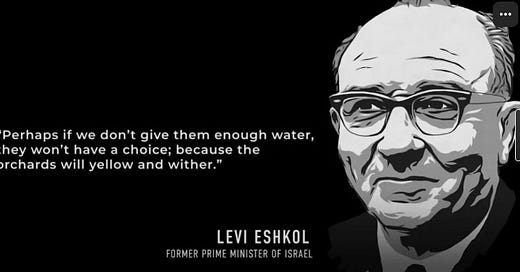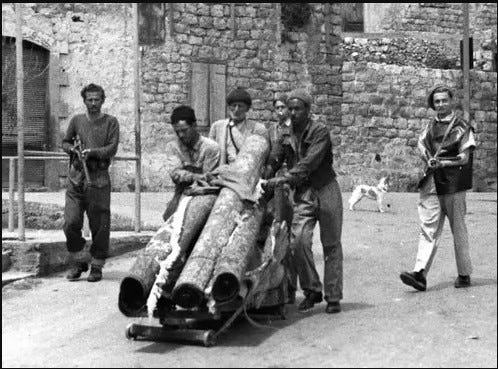Abby Martin’s Gaza Fights for Freedom (2019) is a deeply emotional and hard-hitting documentary that sheds light on the suffering of Palestinians in Gaza, particularly during the 2018 Great March of Return protests. The film presents extensive footage and firsthand accounts from medics, journalists, and protesters. The argument made in the film is that Israel systematically targets civilians and enforces an apartheid-like blockade on Gaza.
Abby Martin is an American journalist, presenter, and filmmaker known for her outspoken criticism of U.S. foreign policy, corporate media, and Israel’s occupation of Palestine. She gained prominence as the host of Breaking the Set on RT America and later founded The Empire Files, a documentary series exposing global injustices. Martin has reported extensively on war, imperialism, and human rights violations, particularly in the Middle East, and her work has made her a controversial yet influential voice in independent journalism.
Gaza Fights for Freedom has faced strong criticism, particularly from pro-Israel advocacy groups like StandWithUs, which dismiss it as propaganda. But do these critiques hold up? Here, I’ll examine both the documentary’s strengths and look at some of the counterarguments against it.
1. The Documentary’s Main Argument: Israel’s Unjustified Use of Force
At the core of Gaza Fights for Freedom is the claim that Israel used excessive and indiscriminate force against peaceful Palestinian protesters in 2018. The documentary provides extensive video footage of Israeli snipers firing on unarmed demonstrators, including medics, journalists, and disabled individuals. We see israeli snipers celebrate after shooting unarmed protesters. The documentary argues that these killings amount to war crimes under international law.
Counterargument from StandWithUs: They argue that the Great March of Return was not a peaceful protest but a Hamas-coordinated operation that used civilians as human shields to provoke Israeli forces. They claim that protesters attempted to breach the border fence and that some were armed or throwing incendiary devices.
Response: While it’s true that Hamas supported the protests and some individuals engaged in violent acts, this does not justify the documented cases of Israeli snipers targeting unarmed civilians. Independent investigations by the UN, Amnesty International, and Human Rights Watch concluded that Israel’s response was disproportionate and often unlawful. Even if some protesters were violent, that does not explain the targeted killings of medics, journalists, and people in wheelchairs—cases the documentary highlights. Israel and its supporters may try to dismiss these findings, but facts don’t change just because Israel does not like them
2. Does the Film Ignore Hamas' Role in Gaza?
The documentary offers a different perspective on Hamas—one that is often absent from mainstream discussions. It highlights changes in Hamas’ stance over time, including its 2017 revision of its charter to formally accept the idea of a two-state solution based on the 1967 borders. While this does not mean Hamas has abandoned armed resistance, it complicates the common narrative that frames it solely as an extremist organization unwilling to negotiate.
Counterargument from StandWithUs: They claim the documentary is misleading because it does not discuss Hamas’ authoritarian rule, its repression of dissent, or its attacks on Israel.
Response: While the film does not focus on Hamas’ governance, this does not invalidate its core arguments. The suffering of Palestinian civilians under siege and military occupation exists regardless of who governs Gaza. Moreover, international law does not permit the collective punishment of a population based on its leadership. The documentary does not aim to provide a full analysis of Hamas but rather to expose the consequences of Israel’s blockade and military actions on ordinary Palestinians. Blaming Hamas for Gaza’s suffering is a classic whataboutism—Israel cannot erase a humanitarian crisis simply by shifting the blame.
3. Media Bias and the Western Narrative
One of the documentary’s strongest aspects is its critique of how mainstream Western media covers the Israeli-Palestinian conflict. It argues that outlets often frame Israel’s actions as “self-defense” while ignoring Palestinian voices and the historical context of occupation and displacement.
Counterargument from StandWithUs: They argue that Western media is already biased against Israel, frequently portraying it as the aggressor while ignoring Palestinian terrorism.
Response: This claim does not hold up under scrutiny. While there is certainly debate over media bias, major networks (CNN, BBC, The New York Times) often frame the conflict in a way that obscures Israeli responsibility. For example, headlines frequently read “Palestinians killed in clashes” rather than “Israeli forces shoot unarmed protesters.” The documentary highlights this double standard by showing how media language sanitizes Israeli violence while emphasizing Palestinian actions. StandWithUs are right to highlight media bias, but facts show that the prevailing bias favours Israel—something this film exposes.
The Hidden Story of Sderot and Palestinian Refugees
The documentary provides historical context by telling the story of Sderot, an Israeli town frequently hit by Hamas rockets. It uncovers a lesser-known truth: Sderot was originally the Palestinian village of Huj. Israeli historian Benny Morris found that in 1946, Palestinians in Huj protected Jewish settlers from the British occupation forces. Yet, just a year later, the same Jewish paramilitary groups expelled every single Palestinian from Huj to Gaza, where their descendants remain today. This historical betrayal underscores the ongoing injustice at the heart of the Israeli-Palestinian conflict.
Additionally, the documentary highlights top-secret Israeli orders from 1948, which included:
Expulsion and demolition of refugee homes to prevent return.
Burning villages and deporting residents to Gaza.
Laying mines on routes to block refugees from returning.
By 1954, Israel had enacted the Law of Prevention of Infiltration, which authorized soldiers to shoot to kill any Palestinian trying to return home. This pattern of forced displacement and militarized enforcement remains central to Israel’s policy in Gaza today.
IDF Propaganda and the Human Shield Myth
One of the most revealing moments in the documentary is how Israeli propaganda attempts to justify the killing of civilians. The IDF frequently insists that Hamas uses civilians as human shields—an argument that crumbles upon scrutiny, as Israel has never hesitated to kill civilians regardless of Hamas’ presence.
The IDF attempted to posthumously smear Palestinian medic Razan al-Najjar, who was killed while treating wounded protesters. The Israeli military released a video claiming she admitted to being a “human shield for Hamas.” However, investigations later revealed that the IDF had edited a clip from a Lebanese television interview to distort her words. In the full video, al-Najjar called herself a “rescuing human shield to protect and save the wounded at the front lines”—a statement about her humanitarian role, not an admission of Hamas affiliation. The IDF had deliberately cut everything after “human shield” to fabricate a misleading narrative. This blatant propaganda effort was widely condemned as an attempt at character assassination.
Conclusion: A Documentary That Demands Attention
Gaza Fights for Freedom is not an objective, neutral film—it takes a clear pro-Palestinian stance. However, that does not make it inaccurate or dishonest. The footage it presents is real, and the suffering of Gaza’s people is undeniable. While critics argue that it downplays Hamas’ role and presents a one-sided narrative, the film’s main point remains valid: Israel’s blockade and military actions have led to massive human suffering, and this reality deserves global attention.
In conclusion, this documentary is an essential watch for those who want an unfiltered look at the life in Gaza.
All articles on Diaspora Dialogue are free to read for one year from publication. If you’ve enjoyed this piece and would like to support my work, you can do so by subscribing, or by buying me a coffee. Thank you for reading and being part of the dialogue!
Article Series: Zionism and Palestine
·
11 November 2024









So true!